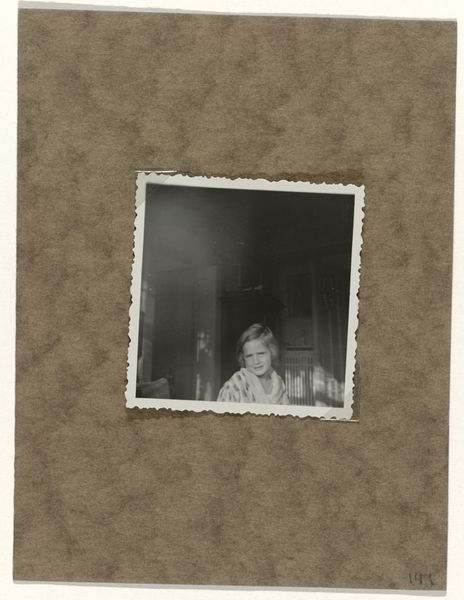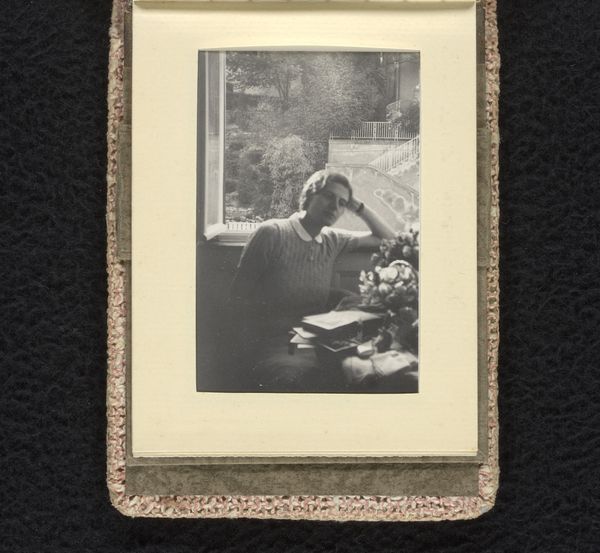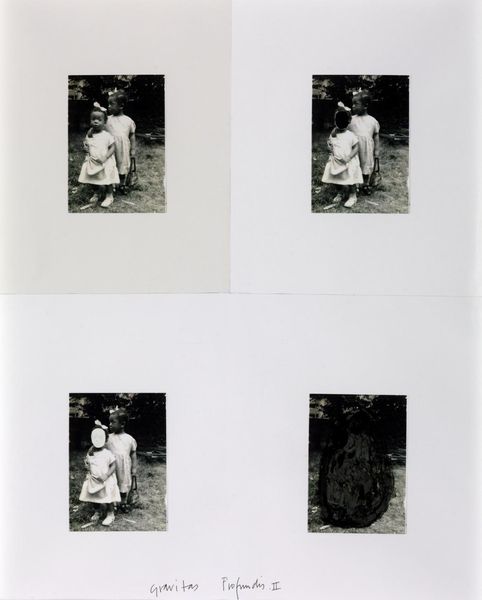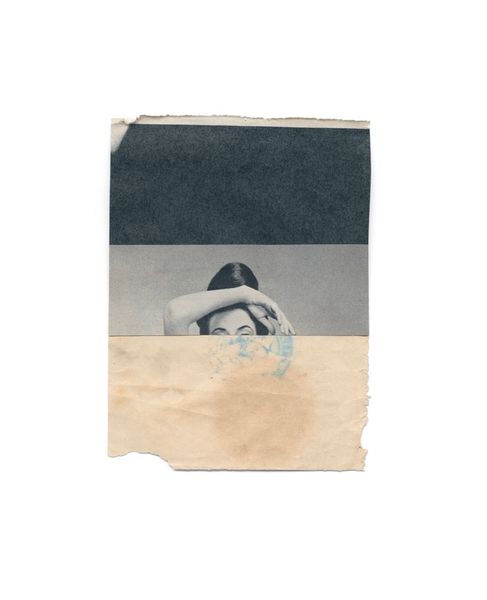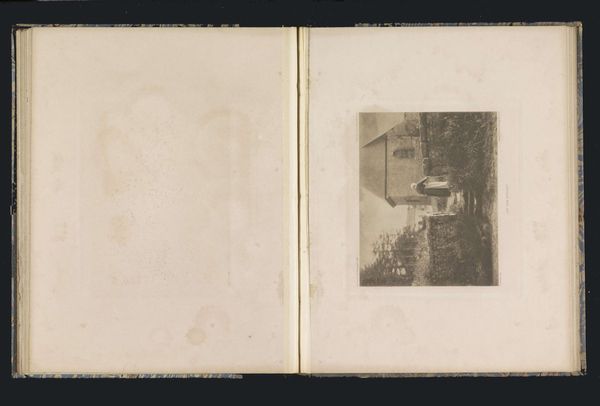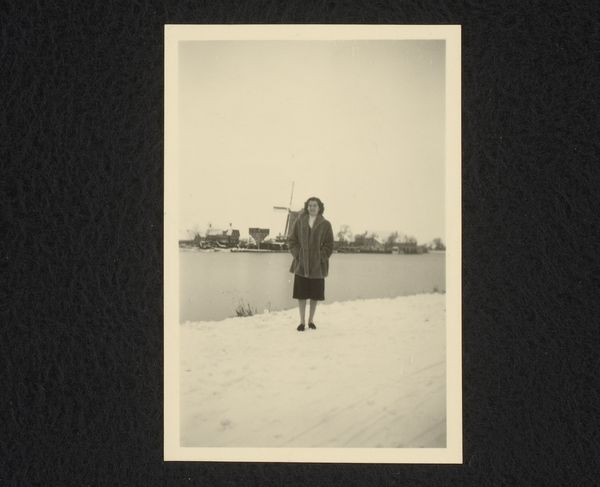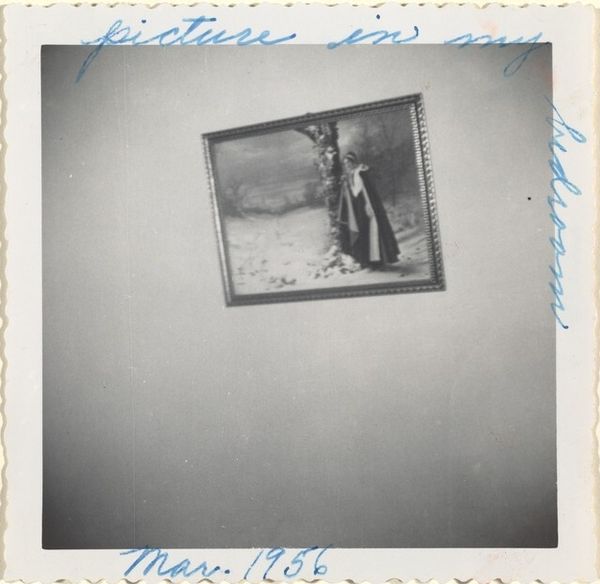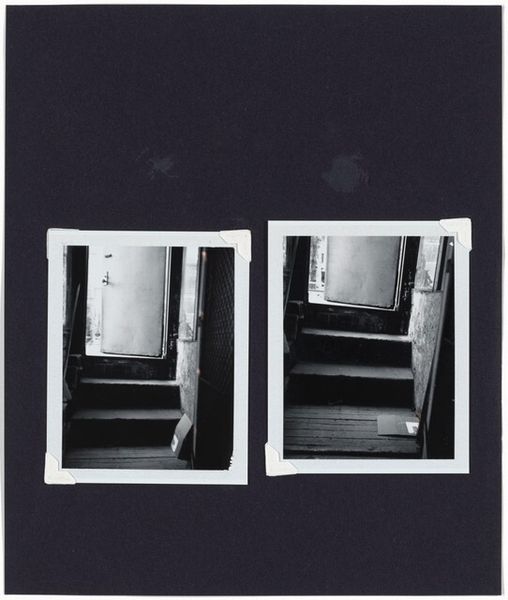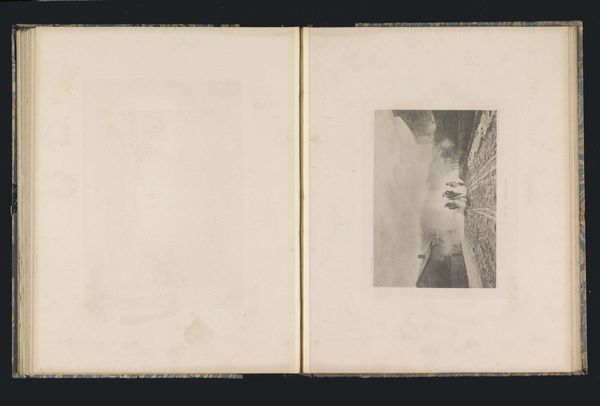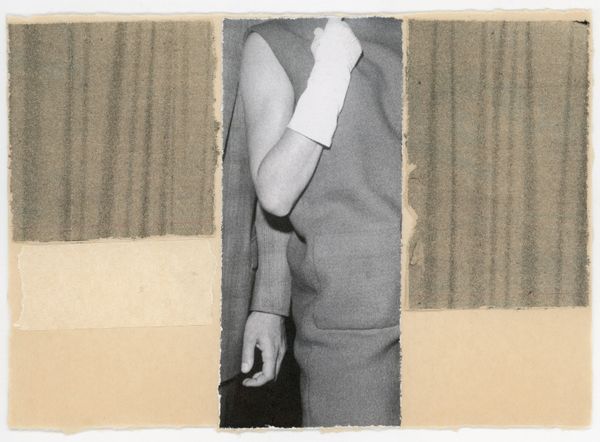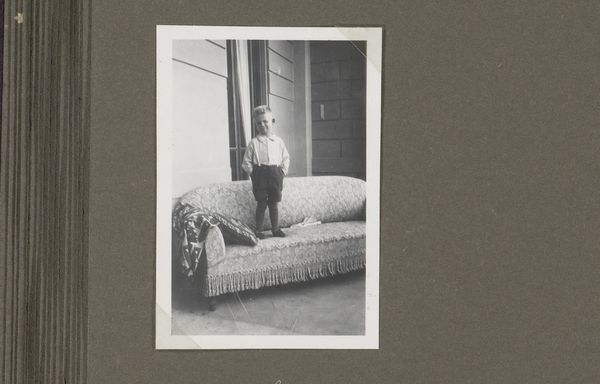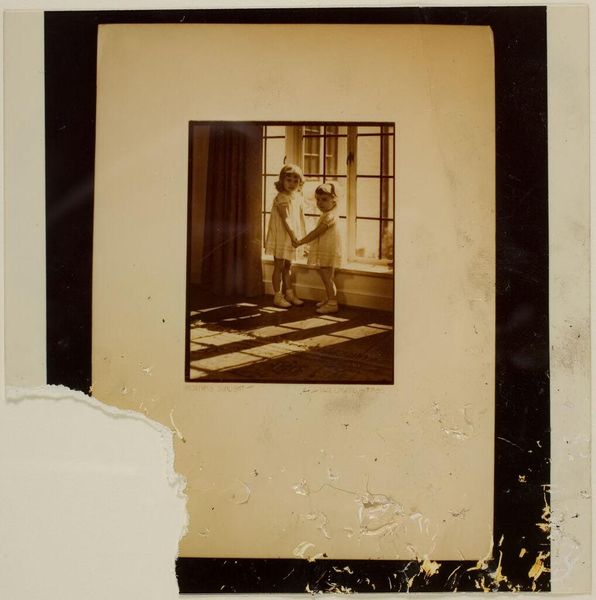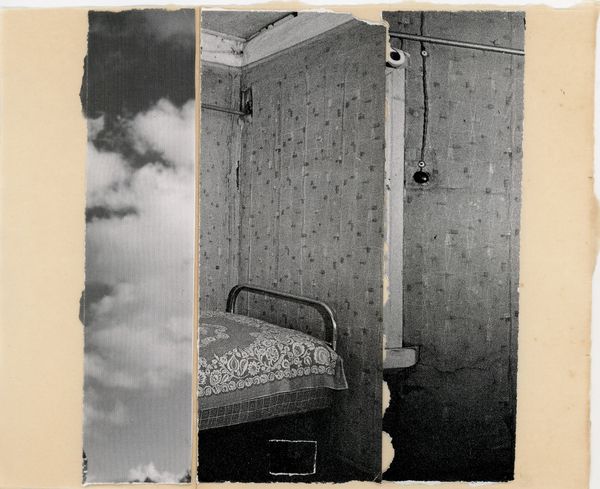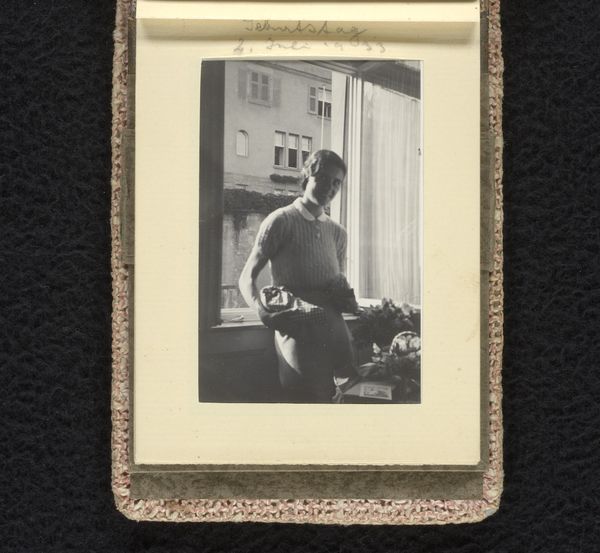
photography
#
portrait
#
photography
#
genre-painting
#
realism
Dimensions: height 60 mm, width 60 mm
Copyright: Rijks Museum: Open Domain
Curator: This touching image, dated July 1934, depicts a young girl named Isabel Wachenheimer framed within a doorway. It’s a silver gelatin print and feels very intimate. Editor: It does. It strikes me as intensely melancholic. The girl's shadowed face, the simple dress—it evokes a sense of vulnerability and constraint. Curator: The photograph exemplifies the aesthetics of Realism during this period. The candid moment captured here invites reflections on family, domesticity, and perhaps innocence lost against the backdrop of an unraveling Europe. The identity of the photographer is unfortunately unknown, adding another layer of historical obscurity. Editor: Doorways often serve as symbolic thresholds—points of transition. Look how she leans against the doorframe, halfway between the dark interior and the sunlit world beyond. It is as if she embodies the uncertainty of the times. That simple checked dress, though, is almost archetypal of childhood during the period. Curator: Indeed, there is an underlying narrative tension within such images from the pre-war years. How does viewing art produced in times of immense social and political anxiety inform your understanding? Does the simple image intensify your historical reflection? Editor: Absolutely. It’s impossible to view this image without the shadow of the Second World War looming large. Each photograph is an index. Her dress is almost too quaint now. And one might now interpret her pose with a sense of foreboding rather than one of simple childishness. What’s truly chilling is the awareness that a single year after it was taken, many children like Isabel saw their entire lives change in unprecedented ways. Curator: As a historian, I often seek to situate the image within a broader history, whereas as an iconographer, you seem to imbue the image with a profound cultural weight that lingers far beyond its surface appearance. Editor: Agreed. Perhaps by engaging with this weight we allow works of art to remind us of the urgency for continuous engagement in times of distress.
Comments
No comments
Be the first to comment and join the conversation on the ultimate creative platform.
